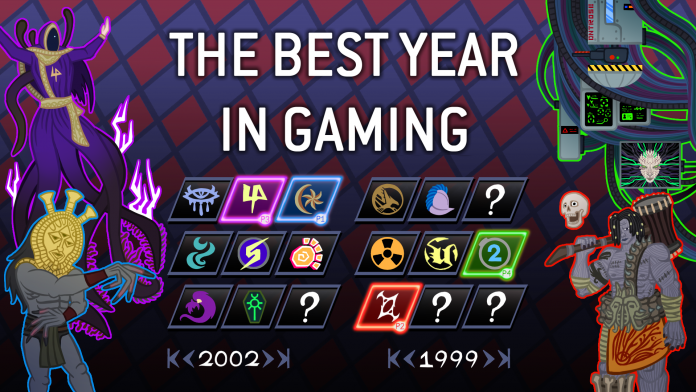Last year’s stacked lineup of games for the Game Awards had us thinking: What was the best year in gaming? As part of our series on determining gaming’s best year, we’re putting together an article on each year, charting the major releases and developments of the year, and talking about both their impact and what made them great.

The Year: 1974
1974 wasn’t the first year for video games, but it wasn’t far removed: Atari had released its Pong arcade cabinet the November two years prior, and it became the first commercially successful arcade cabinet on the market, selling thousands of units. This caused other companies to take notice as arcades started to shift from pinball to game cabinets, which were cheaper, more reliable, and easier to repair. By 1974 there were more than a dozen companies making arcade cabinets, and innovation in the industry started to pick up as developers experimented with new genres, formats, control schemes, and boundary-pushing features like scrolling graphics and collision detection.
Atari was all over the place in 1974, starting its own fake competitor, Kee Games, that would be responsible for making clones/knock-offs of Atari games to sidestep existing sales agreements in the amusements business and get their cabinets into more locations. That same year, Atari would sell its struggling Japanese division to Namco, allowing Namco to break into the video game industry. It would do so by distributing games like Breakout and going on to develop classics like Pac-Man.
Arcade games (and video games generally) at this time were built using transistor-transistor logic (TTL) integrated circuits . In TTL circuits pairs of transistors switch on or off to create logic gates. While these were an important step up from the resistor-transistor logic (RTL) circuits which predated them, games built with TTL circuits had to be built for purpose, with discrete integrated hardware. That all changed in 1974 when Intel released the 8080, its second 8-bit microprocessor. Unlike its predecessor, the 8008, the 8080 would see much more widespread use and lead to the creation of the microcomputer industry before influencing the creation of the x86 architecture which would define computing for decades. The programmable microprocessor was a massive boon to video game developers, though adoption in arcades and home consoles would take a few years.
By the end of 1974 arcade cabinet manufacturers and operators were making money hand over fist, and the space quickly became crowded with companies copying and reverse-engineering each others’ hardware, forcing others to innovate. The period of rapid innovation and the adoption of microprocessors would set the stage for the golden age of arcades.
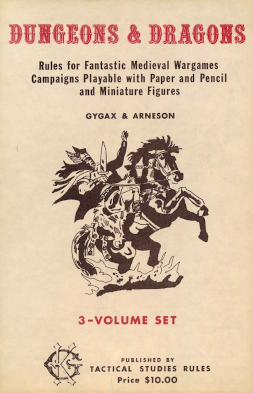
Dungeons & Dragons
Dungeons & Dragons turns 50 this year and its first edition marks the birth of the role-playing game, creating a genre which would have a massive impact on games for decades to come – from other tabletop role-playing games to miniature wargames to video games.
Written by Gary Gygax and Dave Arneson and published by TSR in 1974, the original Dungeons & Dragons was the first tabletop role-playing game, featuring a fantasy setting in which players would create characters from a list of races and classes with random characteristics. Of course, what that means is very, very different from what we’d think of in modern games – original D&D players had three classes to choose from: Fighting-Men, Magic-Users, and Clerics. Fighting-Men could hit things, and got access to the best weapons and armor. Magic-Users had access to a bunch of incredible spells as they leveled up, but would die to a stiff fart in the first few levels. Clerics were most an in-between, able to fight okay and do a little bit of magic granted by their faith. For spells D&D adopted a Vancian magic system, named for the system in Jack Vance’s Dying Earth series in which spells were forgotten after they were cast and had to be re-learned each day. It’s a weird system which never really caught on anywhere else but somehow managed to stick around in D&D to this day.
In a lot of ways, the original D&D was an expansion for Gygax’s Chainmail wargames rules, and relied on those rules for a number of combat effects, making it natural to include miniatures in the game to represent characters and monsters. Combat in the original game was pretty cumbersome, relying on complicated armor class tables to determine the roll needed to hit a target – something later editions would somehow streamline by adding the THAC0 mechanic before doing away with it altogether. Monsters in D&D’s first edition also had morale – another Chainmail/wargaming mechanic – which they had to check as fights went on, often surrendering if things got too deadly.
Dying in the original Dungeons & Dragons was laughably easy, especially because it was easy to find yourself starting a campaign with 1 HP. Characteristics in the game were determined by rolling 3D6, and you had to roll in order, meaning you’d determine them before picking a class. Though it’s worth noting that character attributes weren’t quite as important in this first edition as later editions and had more to do with how fast you level – high Strength helps fighters level up faster while high INT lets wizards level up faster and high WIS helps clerics level up faster.
The first edition of D&D is very tied to the Lord of the Rings, and offers four races to choose from – Humans, Elves, Dwarves, and Hobbits – and ties these very strongly to Tolkien’s representations of the races. Specifically, elves just kicked everyone’s ass and hobbits were mostly garbage, unsuited for combat.
The original D&D is very focused on dungeon crawling and wandering monsters and rewards players for avoiding monsters and fights rather than fighting them, as death is super easy and rewards are often nonexistent – players don’t typically receive rewards unless they track down a monster’s lair and loot it.
The game would go on to receive a number of supplements before getting an overhaul with the release of Advanced Dungeons & Dragons in 1977, reorganizing the game and splitting it across three rulebooks while adding a number of classes and removing several elements that were pulled directly from the Lord of the Rings (TSR had received a cease and desist from Tolkien’s estate). However this original format of the game still gave players plenty to work with and enough of a framework to let their imaginations wild. Over the next two decades the game would spread across the US and to Japan, where enthusiastic programmers would look for ways to translate the game’s mechanics into video games, birthing a host of important games such as Rogue, Wizardry, Ultima, Dragon Quest, and Final Fantasy.

Contigo
This 3M Bookshelf series game was released in 1974 and is kind of like a mix of checkers and mancala. It’s designed for four players (but can be played with fewer with a little bit of rigging) and has players moving pawns to align them across a single six-space row. It’s a movement-based game in which players use tokens to mark how far they’ll move their pieces, shifting tokens around the board to adjust their movement and affecting their opponent’s movement at the same time. It’s a fun little game.

Napoleon: The Waterloo Campaign, 1815
Off the heels of his success inventing block wargames (games where units are represented by wooden/plastic blocks you push around the board instead of minis or chits) with Quebec 1759 in ‘72, Tom Dalgilesh released Napoleon: The Waterloo Campaign, 1815 in 1974. The game comes with a proper map to move your blocks around and includes lots of hidden information and the fog of war. While Quebec invented the block wargame, Napoleon showed how much fun they could be.

Tank
Kee Games (the fishy Atari subsidiary from above) released its arcade game Tank in November 1974. It’s a simple game where two players move around a maze with “tanks” (the tanks are just dots), attempting to shoot each other. The game was a big step up from the previous generation of simpler games and its commercial success helped steady Atari financially. Tank was one of the first games in which players actively dueled, and its success paved the way for others.
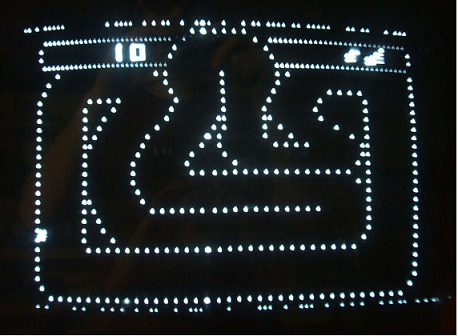
Gran Trak 10/Formula K
The first car racing game, Gran Trak 10 was a top-down racer released in 1974 in which players raced their car around a track scoring points. The arcade cabinet for the game included a steering wheel players used to navigate the track. Atari would later have Kee Games make a clone version of the game called Formula K.
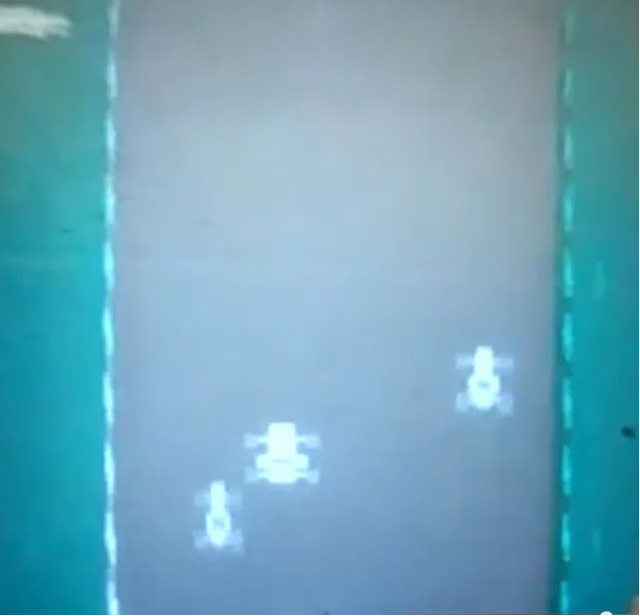
Speed Race/Wheels/Racer
The first vertically scrolling racing game and the second car racing game, Taito’s Speed Race had players using a steering wheel attached to the arcade cabinet to move their car left and right along a road. The game was a hit in Japan and would come to the US courtesy of Midway Manufacturing in 1975, where it would go on to become the year’s top-selling arcade game.
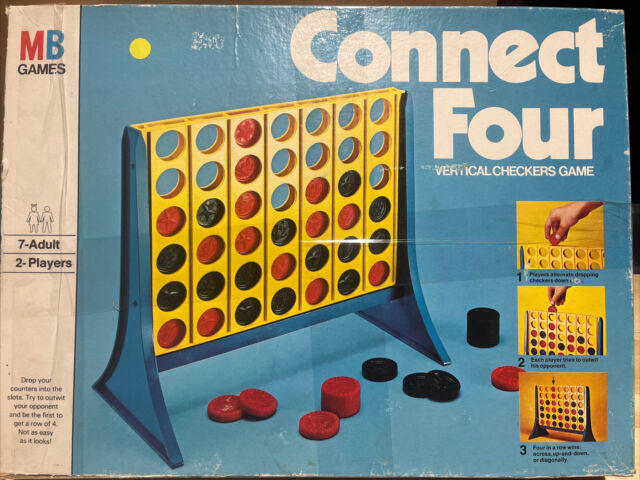
Connect Four
Released by Milton Bradley in 1974, Connect Four is a two-player strategy game in which players alternate dropping colored chips into a 7×6 grid in an attempt to be the first player to connect four in a row. It’s a fun game which takes its tic-tac-toe conceit to the next level by being quite a bit more difficult to solve (though it’s still very much solved and good players will be able to force a draw or win on the first play). That said, Connect Four is a board game classic which is extremely easy to learn, pick up, and play, and that’s why you see large versions of it today in bars alongside Jenga.
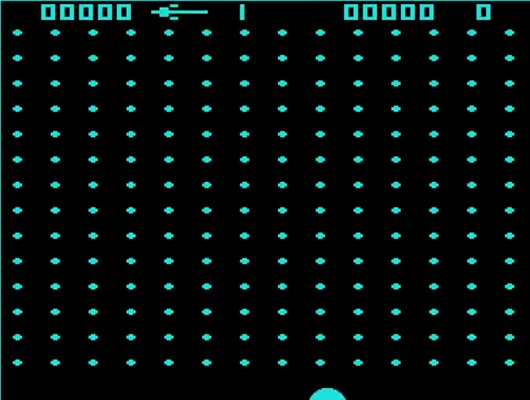
Clean Sweep
Ramtek released this breakout-style game in 1974, in which players moved a paddle left and right to clear pellets from the screen. It’s not super complicated and there were better implementations later, but it’s got enough going on to be interesting visually and the core gameplay is timeless.
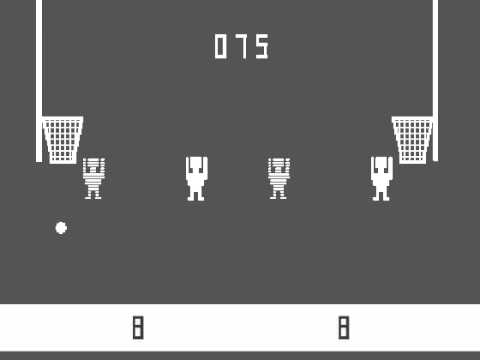
TV Basketball
This early basketball game is really more a variation of pong, where you manipulate a jumping team of “players” to try and push a bouncing ball through a hoop on either side of the screen. It’s a fine enough variation on the formula, and it at least visually resembles basketball.
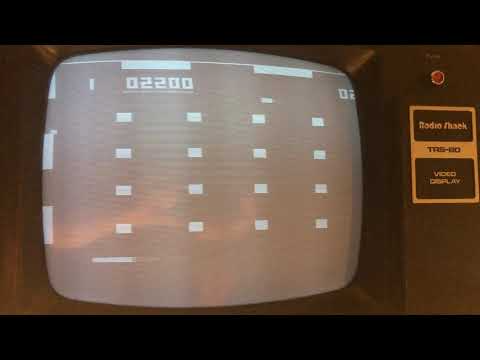
TV Pinball
Really more of a breakout game, this early TV video game has you move a paddle left and right to bounce it around the screen and clear blocks. It’s simple but hey it’s 1974 and we’re literally talking about the first video games ever made here.
Why It Was the Best Year in Gaming
The big thing 1974 has going for it is the original Dungeons & Dragons, one of the single most important games of all time. Napoleon: The Waterloo Campaign, 1815 is also a very solid game, and at the time Gran Trak, Clean Sweep, TV Basketball, and TV Pinball were all innovative and a huge step up from Atari’s Pong, which was released two years earlier. Instead, the case for 1974 rests on understanding that what came before in terms of tabletop and video games was “a whole lot of nothing,” and that means 1974 was in many ways a more exciting time to be interested in the space than any point later on. It’s easy to mark strong years later in this project, but 1974 is the first year of the 20th century where you can really look at the releases and say “damn, that’s a big year for games.”
This article is part of a larger series on the best year in gaming. For more years, click this link. Have any questions or feedback? Drop us a note in the comments below or email us at contact@goonhammer.com.
